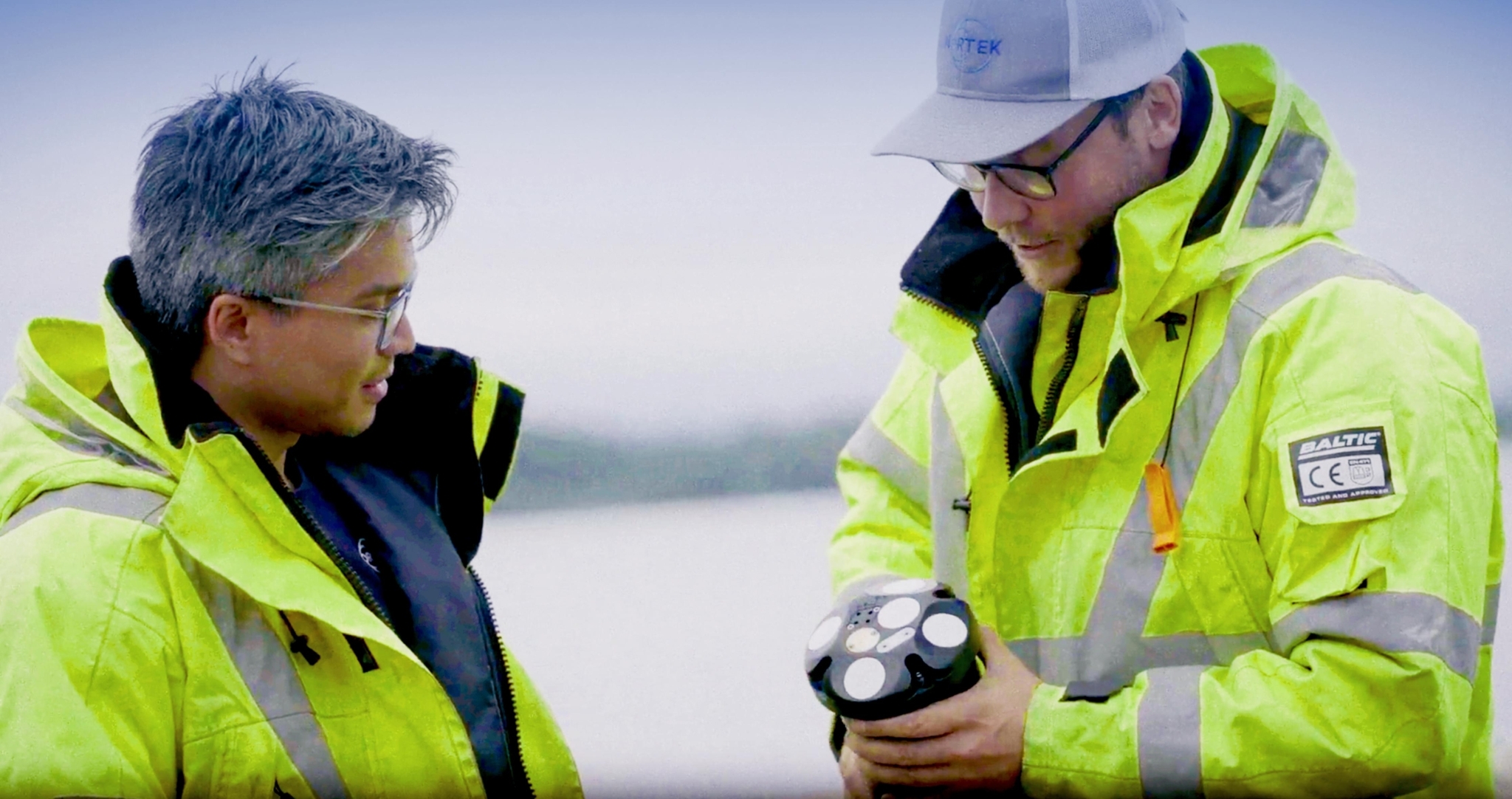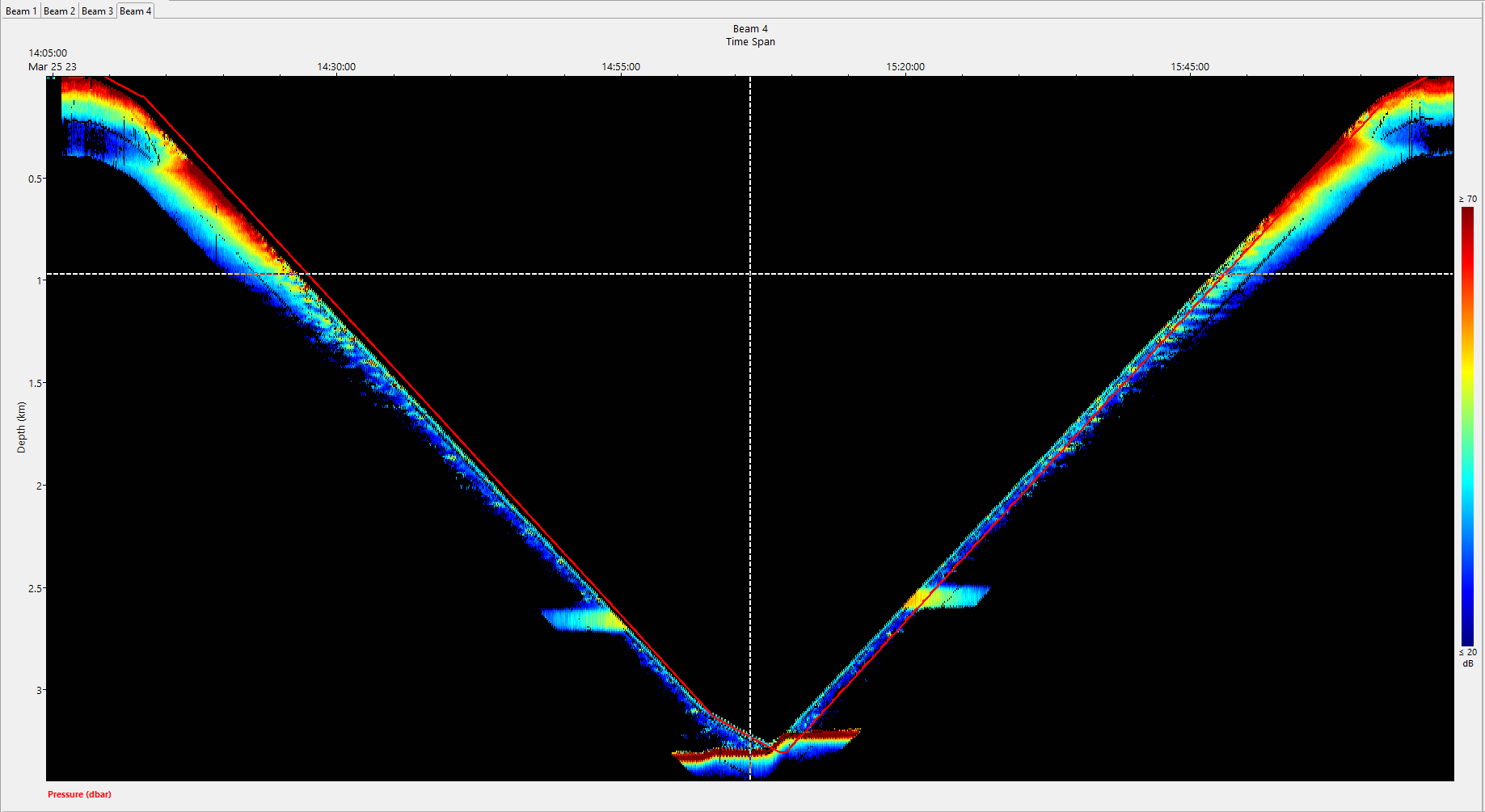
Signature ADCPs are an oceanographer’s supertool – now they’re even more powerful
Nortek’s employees jokingly describe Signature ADCPs as the Swiss army knife of ocean research tools.
Signatures are arguably more capable and more flexible than any other current and wave measurement devices on the market. While these tools can solve extremely complex tasks, they are still easy enough to use for straightforward, standard current and wave measurements.
After listening to feedback from scientific and operational users and adding some ideas of our own, these are the latest upgrades to these popular ocean research tools:
HR mode on all five beams for the Signature1000 ADCP
- Until now, the original software supported only high-resolution (HR) mode on the vertical beam, giving high-resolution data on the vertical motion of the water.
Now HR mode has been added on the four slanted beams of the Signature1000 ADCP. With the added functionality, researchers can get HR data on the horizontal motion of the water, providing an even more complete dataset in three dimensions.
Onboard wave processing on several Signature ADCPs
- Onboard, real-time wave processing is now available for Signature1000/500/250. This allows for wave data processing onboard these ADCPs for lower bandwidth transmission (cabled or wirelessly telemetered applications). This gives users, for example port and harbor operators, real-time data that helps them understand the wave height safety threshold where boats can no longer operate as normal.
Since many of us here at Nortek are passionate surfers, we would be excited if people would start using Signature ADCPs for accurate wave height surf reports! Please do let us know if you decide to do just that.
Storage of raw I/Q echosounder data
Storage of raw I/Q* echosounder data is now available for all Signature1000/500/250/100 instruments with an echosounder license. If you are a biologist looking at fish spawning, you can not only get qualitative data on what is in the water and where it is, but quantitative data on how much there is of a given object in the water (for example, fish eggs).
*In this context, I/Q stands for in-phase (I) and quadrature-phase (Q) components of the return signal.
Echosounder option and vertical velocity for the Signature250 ADCP
- Echosounder mode (licensed) is now available for the vertical 500 kHz fifth middle beam of the Signature250 ADCP. It should be noted that the range of echosounder mode on the vertical beam has a range of approximately 70 m, while the four slanted transducer beams are 250 kHz with a 200 m current profiling range.
Even though vertical velocity data has already been available from the four slanted beams of the Signature250, this ADCP now also offers dedicated vertical current velocity measurements from the 500 kHz fifth middle beam. This gives researchers and operators the option to record data on vertical water current movement with even higher precision. Vertical velocity measurements are possible in a range of approximately 60-70 m. This dedicated vertical current velocity measurement capability is particularly interesting for users researching vertical water mixing surrounding large-scale eddies.
External heading input for Signature ADCPs mounted on magnetic buoys
- Some buoys are so large that it is impractical to calibrate the internal compass of the ADCPs to compensate for the magnetic interference from the buoy itself.
With external heading input from two external antennas (on the Hemisphere GNSS) users can trust the stated direction of your current velocity data, without having to calibrate the ADCP’s compass.
Lowered-ADCP functionality for the Signature100
- Big research vessels sometimes equip large cylinders (called “rosettes”) with sensors and instrumentation. This cylinder is then lowered into full ocean depth (6000 m) to take measurements throughout the ocean’s water column. These lowered research cylinders, or rosettes, are a cost-efficient and flexible alternative to large moorings, enabling more accessible measurements in multiple locations.
To meet the needs of this deployment scenario, Nortek’s developers have therefore given the Signature100 the functionality required for lowered ADCPs. Instead of getting data on current velocity limited to the instrument’s 300-400 m range, this method can provide full ocean depth current velocity profiles of up to thousands of meters (up to 6000 m).
Since their launch in 2015, Signature ADCPs have continually pushed the envelope for what scientists and engineers can do as they work in the marine environment. Nortek’s development engineers will make sure to continue to refine these tools to enable new and useful technological capabilities for ocean research and engineering!

Lowered-ADCP functionality for the Signature100
- Big research vessels sometimes equip large cylinders (called “rosettes”) with sensors and instrumentation. This cylinder is then lowered into full ocean depth (6000 m) to take measurements throughout the ocean’s water column. These lowered research cylinders, or rosettes, are a cost-efficient and flexible alternative to large moorings, enabling more accessible measurements in multiple locations.
To meet the needs of this deployment scenario, Nortek’s developers have therefore given the Signature100 the functionality required for lowered ADCPs. Instead of getting data on current velocity limited to the instrument’s 300-400 m range, this method can provide full ocean depth current velocity profiles of up to thousands of meters (up to 6000 m).
Since their launch in 2015, Signature ADCPs have continually pushed the envelope for what scientists and engineers can do as they work in the marine environment. Nortek’s development engineers will make sure to continue to refine these tools to enable new and useful technological capabilities for ocean research and engineering!

